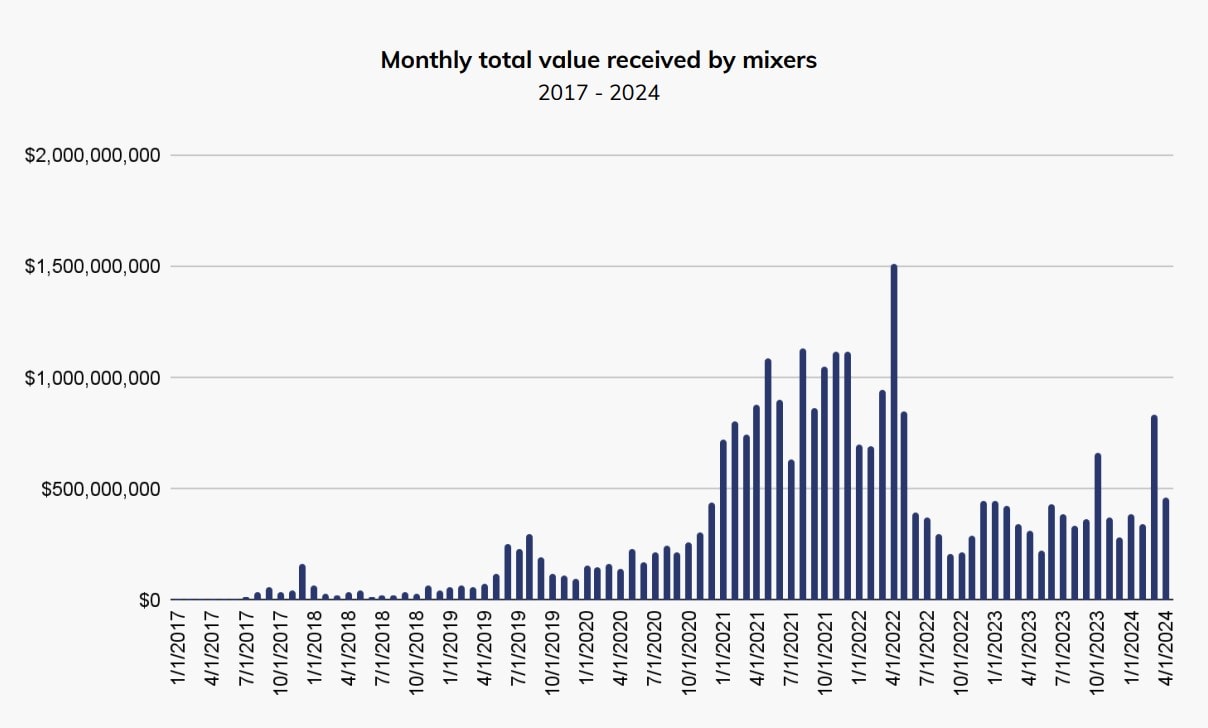С 2019 года со связанных с незаконной деятельностью кошельков отправлено почти $100 млрд на различные обменные сервисы для отмывания. Об этом свидетельствуют данные нового отчета Chainalysis.
К таковым сервисам аналитики относят централизованные криптобиржи, протоколы децентрализованных финансов (DeFi), миксеры, гемблинговые ресурсы и мосты.
Наибольшая сумма подобных транзакций — свыше $30 млрд — была зафиксирована в 2022 году. Эксперты Chainalysis связывают ее с операциями с участием сервисов, находящихся под санкциями, таких как российская биржа Garantex.

Аналитики отметили, что большая часть всех незаконных транзакций совершается через стейблкоины. По их мнению, это может быть связано с общим ростом популярности так называемых стабильных монет.
Однако их использование также добавляет «элемент риска» для отмывающих средства игроков: эмитенты таких активов могут замораживать средства, указали в Chainalysis.
К примеру, о подобном часто сообщают в Circle и Tether — компаниях, выпускающих два самых популярных стейблкоина на рынке. Последняя сообщила, что заморозила примерно 1600 адресов, на которых хранятся средства на сумму около 1,5 млрд USDT.

Число перемещающих незаконные средства кошельков в разбивке по типу актива. Источник: Chainalysis.
Среди самых популярных типов сервисов, которые используют для отмывания средств, аналитики выделили миксеры.
Параллельно с растущей активностью на рынке в целом в 2024 году, она также начала возобновляться и в сегменте миксеров. Наибольший рост использования зафиксировали проекты WasabiWallet, JoinMarket и Tornado Cash.

В то же время эксперты подчеркнули — несмотря на то, что основной целью подобных сервисов является повышение конфиденциальности, не все обрабатываемые ими транзакции связаны с незаконной деятельностью.
Кроме того, аналитики отметили монеты вроде Monero и Zcash, которые ориентированы на обеспечение приватности, тем самым усложняя процесс отслеживания операций с ними, заявили эксперты. Количество транзакций с использованием Monero стало расти, резюмировали в Chainalysis.
Также все чаще злоумышленники обращаются к различным кроссчейн-мостам, чтобы скрыть происхождение незаконно полученных средств.

В то же время более половины незаконных активов оказываются на централизованных биржах. Злоумышленники обращаются к этим платформам для отмывания средств из-за их высокой ликвидности, простоты конвертации криптовалют в фиат и интеграции с традиционными финансовыми сервисами, объяснили в Chainalysis.
«Однако заметная тенденция к снижению объема средств, поступающих на централизованные биржи, — с почти $2 млрд в месяц на пике до примерно $780 млн в месяц — свидетельствует о повышении эффективности программ платформ по борьбе с отмыванием», — говорится в отчете.


